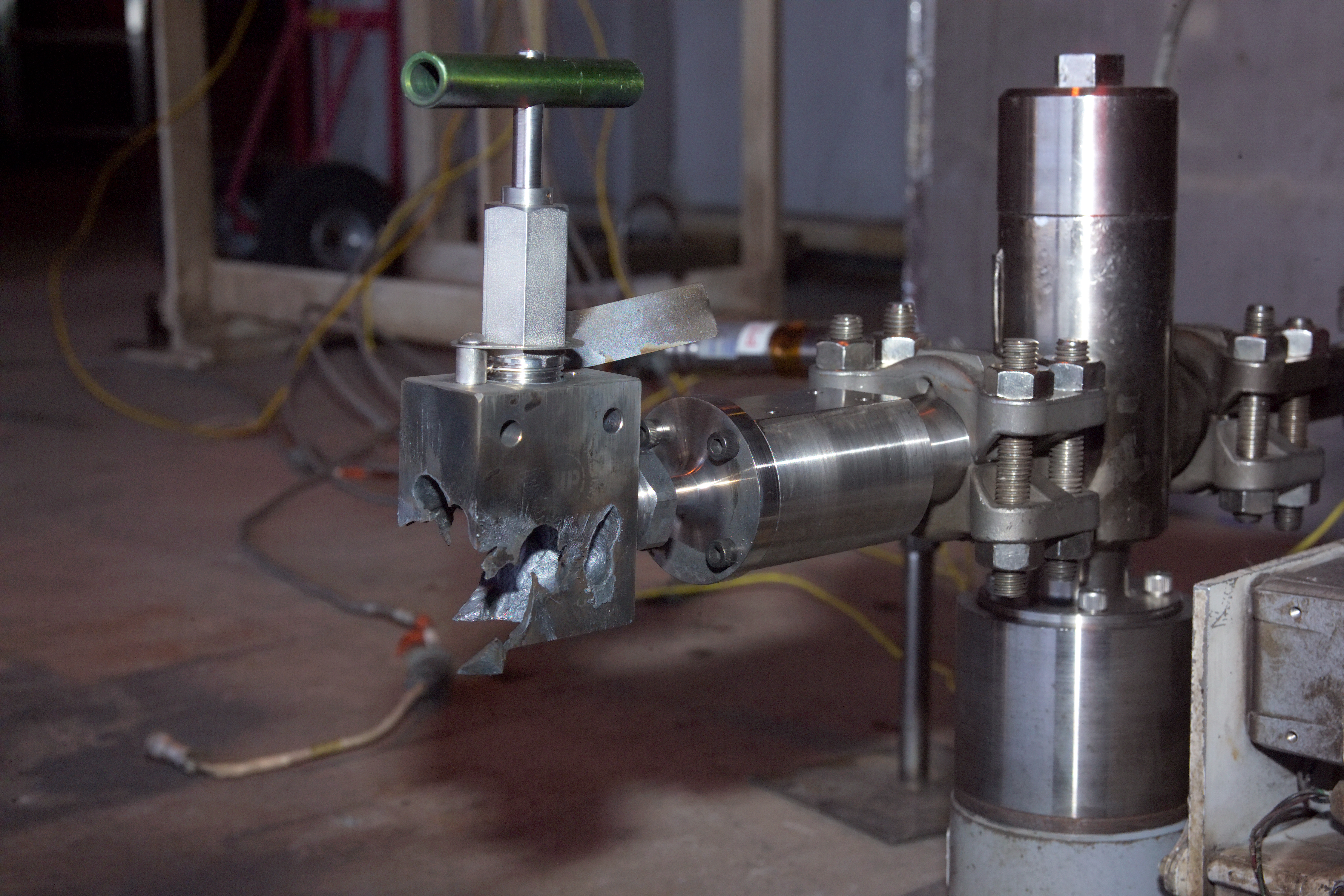Evaluation of Additively Manufactured Metals for Use in Oxygen Systems
NASA’s Office of Safety and Mission Assurance’s (OSMA) Nondestructive Evaluation (NDE) program is leading a variety of agency initiatives to ensure the successful qualification of Additive Manufacturing (AM) products for deployment on future NASA missions.
Oxygen systems are used in propulsion, Environmental Control and Life Support Systems (ECLSS), as well as ground support systems and electrical generation. A technology area identified by NASA as critical in enabling human spaceflight to Mars includes low-cost, high-performance engines, which will hinge on AM technologies in both oxygen and fuel systems.
AM provides unique opportunities to fabricate highly complex engine components that are cheaper, lighter, more compact and more quickly fabricated, and that generate less waste during fabrication than current state-of-the-art component designs. Metals produced by AM methods, such as Powder Bed Fusion Technology, have now reached a high enough level of maturity to be considered for qualification in human spaceflight oxygen systems. The Space Launch System, Commercial Resupply and Commercial Crew programs have expressed their intent to use AM components in propulsion systems. It appears likely that AM components also will be included in future life support systems.
In oxygen systems, material flammability and ignition performance decreases with increased pressure, temperature and gas velocity. As such, investigating these performance characteristics becomes key for safe systems and operations. In high-performance engines, the conditions that decrease a material’s oxygen performance are often severe, making material selection paramount. NASA will be using systematic flammability and ignition testing to accurately evaluate the risk of using AM metals in oxygen systems. NASA’s standard related to material compatibility and testing (NASA-STD-6001B) subscribes to this method and requires that material selection for oxygen system applications be based on flammability and combustion test data.

Stainless steel hand valve ignited in high-pressure oxygen service by particle impact
The first AM metal being tested for oxygen compatibility is Inconel 718. Historically, engine components made from wrought Inconel 718 have had excellent mechanical performance at elevated pressures and temperatures; however, only testing will determine if Inconel 718 produced via AM has equal or better ignitability and flammability characteristics when compared to its wrought counterpart under similar conditions.
Past and Future Testing
OSMA-sponsored tasks at White Sands Test Facility (WSTF) have proved critical for ensuring NASA understood the safety issues associated with NASA oxygen systems, which are vital to propulsion and life support. There is concern with material compatibility in AM engine components as failure of AM parts used in spacecraft systems could result in damage to equipment, loss of mission or loss of life. In an effort to better understand some of the unknown characteristics of AM materials, Jonathan Tylka, an oxygen compatibility test engineer at WSTF, and his team are spearheading the most comprehensive oxygen compatibility testing ever conducted on AM metals.
“Working directly with the NASA Marshall Space Flight Center Additive Manufacturing Group, we performed limited testing that showed a need to understand the effects of post process protocols on flammability,” explained Tylka. “However, a larger effort was needed to perform testing required to fully understand the flammability performance of Selective Laser Melting Inconel 718 in oxygen systems, and with OSMA’s support, WSTF was able to perform the largest flammability testing on AM Inconel 718 ever conducted.”
According to Tylka, preliminary AM experiments indicated Hot Isostatic Pressing and heat treating post process protocols had some surprising effects on flammability.
“With the larger experiment conducted this month, we are looking forward to replicating the previous experiment and expanding the number of factors investigated,” said Tylka.
Tylka and his team’s future plans are to conduct subsonic and supersonic particle impact testing on AM Inconel 718. This testing will help identify the material’s susceptibility to ignition by particle strikes and also help to understand more completely the deviations between AM and wrought Inconel 718.
Long-term goals are to draw additional commercial and government partners, perform compatibility studies on all candidate AM materials for use in oxygen systems, conduct full-scale testing on AM components, and in cooperation with the AM community, develop a guide addressing the safe use of AM in oxygen systems. The goal of the guide is to serve as an aid in addressing specific materials’ compatibility, design, manufacturing, cleaning, assembly, operations and maintenance.